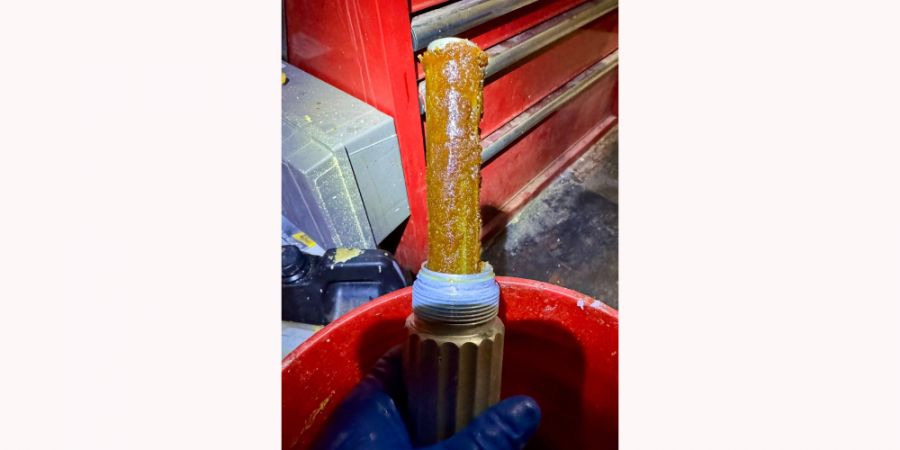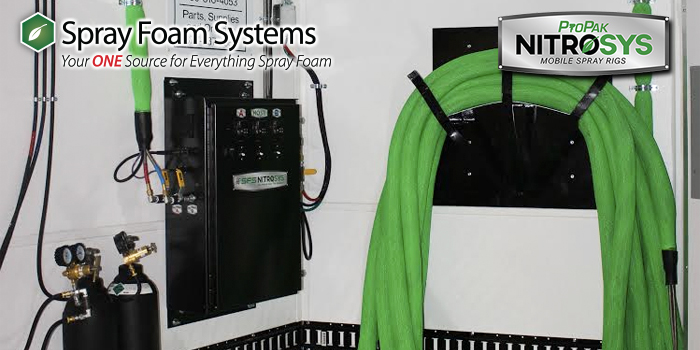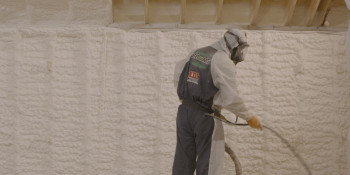Power Packed or Fire Trapped?
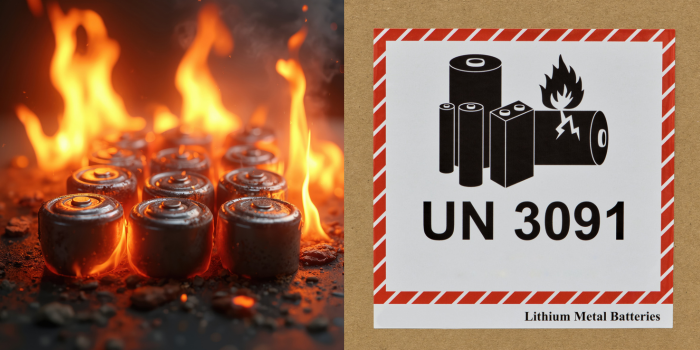

Spray Foam Magazine – Spring 2025 – Lithium-ion batteries are rechargeable batteries that help power various equipment, like hand tools, cell phones, electric vehicles, and industrial robots. These batteries have many benefits, including fast charge times, low maintenance, light weight, and high-power density. Many contractors have them in their rig, but are they aware that alongside all the benefits, there could also be a potential hazard waiting to ignite. Spray Foam Magazine spoke with one contractor, who unfortunately experienced such a disaster, and investigated how contractors can safely store lithium-ion batteries.
Fred Newman is the owner and operator of B and B Foam Insulation in Kentwood, Louisiana. One night, Fred had just returned home after his usual workday, when his cell phone rang. The caller was a client with disastrous news. Fred’s truck and trailer were in the mechanic shop he had just sprayed, and they were on fire. When Fred arrived on site, he was greeted by five fire crews from different areas, all trying to put out the blaze.
Fred’s truck and trailer were destroyed; the intense heat incinerated everything inside the vehicle and the mechanic shop. Fortunately, the building’s walls and roof were spared. Fred lost everything—his tools, equipment, proportioner, hose, extension cords, generator, and three full sets of closed-cell SPF. He stored several lithium-ion batteries for his handheld tools together in a five-gallon bucket. According to the fire investigator’s video analysis, it appeared that one of the lithium batteries had exploded and started the fire. Now, Fred faced the difficult task of listing all the items that were in his truck and trailer for the insurance company.
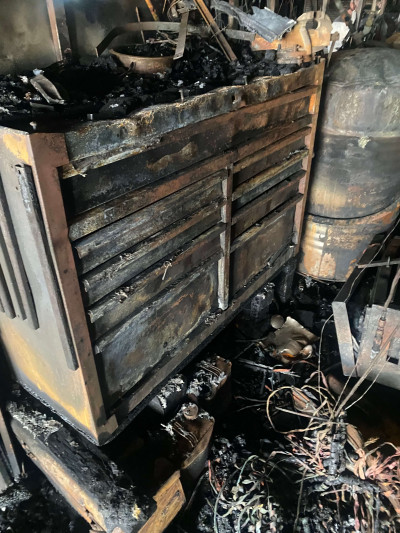

The primary danger with lithium-ion batteries lies in the electrolyte contained within the battery cell. Fires involving these batteries typically occur while they are charging. Additionally, a fire can start if the flammable electrolyte leaks and contacts an ignition source. However, in Fred’s situation, the battery in question was not charging; it was simply sitting in a box with other batteries.
Lithium-ion battery fires are fast-burning, extremely hot, plus dangerous gases can leak from a burning battery making them a significant challenge for firefighters to extinguish. There is also a risk of the battery reigniting after it has been extinguished; this phenomenon is known as thermal runaway. If batteries are stored together, one battery reigniting can lead to others igniting, which increases the risk of fire spreading. Lithium-ion batteries can catch fire for various reasons, including:
- Manufacturing faults.
- Impact damage: If the battery sustains any damage, the risk of ignition increases.
- Environmental factors: Batteries should be kept in a cool and dry environment. If a battery is exposed to salt or water, it should be treated as if it is damaged.
Safe & Secure
OSHA doesn’t have a specific standard for lithium batteries, it counts on general industry standards and the General Duty Clause, including fire protection, electrical safety, and process safety management, to ensure workplace safety related to these batteries.
To help prevent devastation, follow these procedures for storing batteries:
- Protect the batteries and cells from damage or sabotage.
- Ensure the storage temperature is between 35 to 90 degrees Fahrenheit.
- Minimize exposure to light, especially natural sunlight, which can cause damage and temperature fluctuations that may negatively impact the batteries.
- While batteries have self-contained structures, keep them away from excess moisture and areas with low humidity. Using a dehumidifier can help reduce moisture that could affect your battery pack.
- Store batteries in a non-combustible container or storage unit and avoid placing them directly on the floor. Direct placement on the floor may lead to overheating and discharge.
- Avoid solid surfaces like tables that could fuel a fire if the batteries ignite. Consider purchasing a commercial battery rack or a lithium safety bag as effective ways to protect the batteries.
- Ensure that batteries are kept away from flammable materials, such as wood, curtains, carpet, or spray foam.
According to Ryan Cihowiak, a Special Operations Captain in Fire Rescue in South Florida, “Lithium batteries should be stored on a metal shelf and kept away from combustible materials. Once these batteries enter thermal runaway, they cannot be extinguished and will continue to burn. They produce all three elements required for the Fire Triangle: oxygen, fuel, and heat.”
Thermal runaway is when the battery plates touch each other, and the reaction can’t be stopped. The battery plates are separated by a thin sheet of plastic and a small amount of oil. When not on the charger, thermal runaway is commonly caused by a traumatic event like falling in the crack of a seat and adjusting it and crushing the phone. Another common cause is the battery reaching a temperature where the plastic insulating sheets melt, and the battery plates touch each other. The touching of battery plates causes significant heat and burns through all the other insulating sheets, that’s what creates the runaway fire we can’t extinguish.
Studies have been conducted on different extinguishing agents and the only two options that work on these fires are:
- Water to cool and prevent further batteries from thermal runaway.
- The packing substrate called Cell Block.
Dry chemical extinguishers, Metal X, Carbon Dioxide, and foam aren’t effective. The main reason is because the extinguishing agent is unable to get into the area where the plates of the battery packs are. It’s also complicated since the battery creates its own oxygen and can burn underwater or in a vacuum.
Ryan Cihowiak goes on to explain, “When responding to a lithium battery fire, we will don our protective bunker gear and use SCBA (Self-Contained Breathing Apparatus) while approaching from upwind. The SCBA is crucial, as the smoke generated by these batteries is highly hazardous. Our first step will be to isolate the battery from any nearby combustibles. If we cannot move the battery, we will use water to cool other batteries or combustible materials to prevent them from contributing to the fire. Once the battery appears to have stabilized, we will transfer it into a bucket of fresh water or a commercial substrate with a consistency similar to sand or kitty litter.”
By placing a battery in a substrate or a bucket of water, you can protect other items from catching fire if another battery cell goes into thermal runaway. However, it is important to note that the battery itself will still be on fire, and there is nothing anyone can do to stop that. The battery simply needs to discharge all its energy before the fire can be extinguished.
Following the devastating fire in his truck and trailer, Fred Newman is grateful for his strong support network saying, “Many of my close foam family members have reached out to offer help. I want to thank everyone for their support and kind words. I have been in business since 2015 and have never filed a claim before. I want to emphasize the importance of taking pictures and inventorying everything you have in your trailer or box truck—every single item. If you have updated equipment, whatever it may be, make sure to inform your insurance company.”
Numerous contractors have found themselves in similar situations to Fred’s due to lithium-ion batteries that ignited even when they were not charging. By highlighting the potential dangers and offering preventative measures, Fred and others who have experienced this traumatic event hope to help others avoid such incidents in the future.
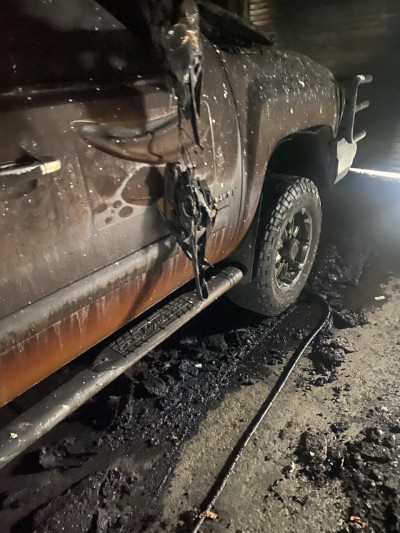
If you see signs that a battery fire is imminent stay upwind and call 911 immediately.
Published by Spray Foam Magazine
SprayFoam / Spray Foam Insulation
Disqus website name not provided.




